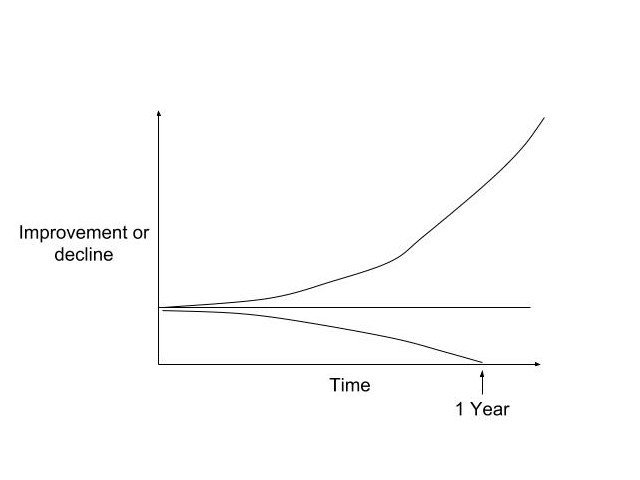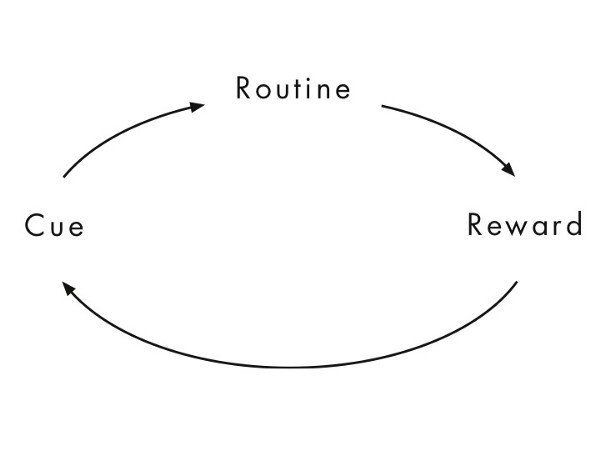Improve Every day: The power of ‘3 Focus Hours’
Generally applicable to all; be it artists, techies, or writers.
If there is only one key takeaway from this blog, it is this: ‘Train like an athlete and sprint’.

We’ll start with discussing what we mean by improvement and in the later part, I’ve assembled some tools to achieve that.
I’ve added a book recommendation at the end, to take your improvements to the next level.
“Train like an athlete and sprint. “
We live in a fast and ever improving world.
At the current pace of change (bug fixing and improvements 😅), the world reinvents itself within a decade.
To stay relevant to the game, improving ourselves should be on top of our priority list
But, we don’t have time for 10,000 hours of learning before we create anything. So, cut short the loop.
In the tech world, we call it ‘learn by creating a new project’. (or Learning-by-doing, similar concept)
For athletes, we call it ‘training’. (Simple terminology, nothing new.)
Terminology is not important here, but the underlying philosophy is. They all try to convey the same thing; Apply whatever you learn, without delay.
Imagine an athlete
How do they train?
A warm-up, stretching, and workout session followed by a practice session. ‘Practice Session’, this makes all the difference.
So, the second key take away is: ‘Apply your learning immediately’.
In other words; utilize the little improvements right away.
Utilizing the little improvements, that is what we call;
Aggregation of marginal gains
It is simple, we try to inculcate simple habits in our daily lives which takes us a little closer to what we are trying to achieve.
Look at the math here, just 1% improvement every day for 1 year and take an imaginative leap to visualize what you’d feel and look like.

Small improvements result in big transformation
This graph right above says; a streak of small improvement or decline brings a transformation.
Everybody wants a radical change, a transformation. But it is a process.
A simple improvement or a mistake, 1% better or 1% worse every day, these things compound over time.
Habits are the compound interest of self-improvement.
So, it is clear, train like an athlete (learn)and then sprint (practice/apply).
Now, let’s dig into the tools…
A lot of people say that I want to start working out but I don’t feel like going to the gym or I want to learn guitar but I don’t feel like picking it up. We all have heard this or even said this at times.
In such situation what we actually lack is a solid plan.
To prove this, a survey was conducted on three focus groups.
They were told:
- Group-1: Just track how often you workout in the next week.
- Group-2: Just track how often you workout in the next week. But, were given motivational lectures on workout benefits and good health.
- Group-3: The third group was given a sentence to fill up:
I’ll workout for 20 minutes on this ____ Day and at this ____ time, in this ____ place.
The Result:
From the 1st Group, 2 out of 3 people didn’t workout. For the 2nd group, motivation group did nothing and the numbers were same as group 1.
In the 3rd group, 9 out of 10 participants workout.
This is called Implementation Intention.
Implementation intention
It was clear from the experiment that the group 1 and 2 lack proper plan and not motivation.
In the absence of a proper plan, we find excuses to avoid the tasks.
The ‘Implementation intention’ is a self-regulatory technique. You may find a lot of such experiments which validated this method. Use this simple method for goal setting.
Jumping into the last part, here are steps to see quantifiable improvements and how to achieve that.
There are 4 steps which are essential to form a *habit —
Noticing — Wanting — Doing — Liking
Chains of habits are too light to be felt until they are too heavy to be broken. — Warren Buffett
Noticing — Set actionable and quantifiable goals
First, you need to notice what could be done and what should be done.
Second, the goal should be simple and well defined. For example: I’ll blog every Monday, I’ll run 2 km every weekend, I’ll read a book before going to bed every night, I’ll practice guitar first thing in the morning for 4 days in a week etc.
All these goals are quantifiable, actionable, and simple to define. Also, we are not setting unrealistic goals to push ourselves because a push into your routine should come naturally, that we’ll learn in the last step.
Wanting — Architect your Environment
Build a trigger.
Habits are formed by practicing a simple trigger.
If y ou want to read a book every night before going to bed, just keep a book on the pillow every day before leaving for work and when you come back for sleep, the trigger is there to pick up the book and read a few packages.
Similarly, if you want to drink more water, keep a water bottle with you all the time.
Keep fruits on your work desk to eat more fruits, put a guitar in your vicinity so you don’t forget to play it.
All these are simple triggers to implement and they do give results.
Doing — Don’t break the chain
Hold on to the streaks.
Once the stage is set with simple goals and triggers, you need to do the slightly tough part of this process.
Trust the simple goals and triggers and start doing it.
‘Don’t break the chain’ — It is Jerry Seinfeld’s method of creative success.
To follow this method, take a calendar and mark the days on which you completed your routine or task. This calendar will give you a mix or external and internal motivation to continue the streak.
Liking — Reward yourself
Track your work.
It is said that the bad habits give immediate rewards and good habits result in long-term benefits.
For example; working out will result in a better immune system and a healthy body over a few years and practicing a musical instrument will make you a master in a few years.
But we need a reward to stick with the habit and that is why bad habits easily capture us.
The easiest way to reward yourself is by tracking your progress. Tracking progress rewards brain and keeps us motivated to be in the process.
Tracking your progress will give a natural push into the habit.

“Routine, in an intelligent man, is a sign of ambition.”— W. H. Auden
This is the Habit Loop.
All you need to do is identify what improves you and tweak that into this loop.
That ‘3 focus hour thing’
We are humans, we have an attention span; the ability to focus and sustain attention on a task.
Understanding Human Attention Span is essential, then only you can bring those above-discussed 4-steps into your routine.
Setting aside ‘3 Hours’
There is no universally agreed time duration for Human attention span. Common span for focus attention for teenagers and adults is 10–20 minutes but we can choose to re-focus on the task.
A three hours block, free of distraction and stress will help you get into those ‘Focus Attention’ zone more than once. In ‘Focus Attention’ we could produce consistent results.
Anything less than 3 hours is not enough and anything above that will be too laborious. Maybe that’s is why a lot of professionals talk about 3 uninterrupted hours a lot.
Depending on your work, set aside 3 hours for the hardest and the most important tasks.
In which part of the day should I set aside my 3 hours? that doesn’t matter, it could be morning, evening, or midnight, whatever suits you.
Upgrading them to ‘3 Focus Hours’
At first, it is difficult to let people around you understand that these are your ‘Do Not Disturb’ hours.
But with each passing day, you and your surrounding environment will blend in.
To upgrade your 3 set aside hours into 3-Focus-Hours, you need to equip your desk or workstation with the essentials so that the chances that you’ll leave your seat are close to zero.
Keep the essentials with you on top of the table and within a few days, you’ll enjoy this practice.
3 Hours every day gives you 21 uninterrupted hours per week and 90 hours every month.
Book recommendation, as promised:
The Power of Habit: Why We Do What We Do, and How to Change.
If you found this story useful, please click the 👏 button and share to help others find it!
HapRamp is a #STEEM Blockchain based social media for the creative communities where people can earn rewards for sharing valuable content on the platform.
______________________________________________________________________-
Congratulations @hapramp! You have completed some achievement on Steemit and have been rewarded with new badge(s) :
Click on any badge to view your own Board of Honor on SteemitBoard.
For more information about SteemitBoard, click here
If you no longer want to receive notifications, reply to this comment with the word
STOP